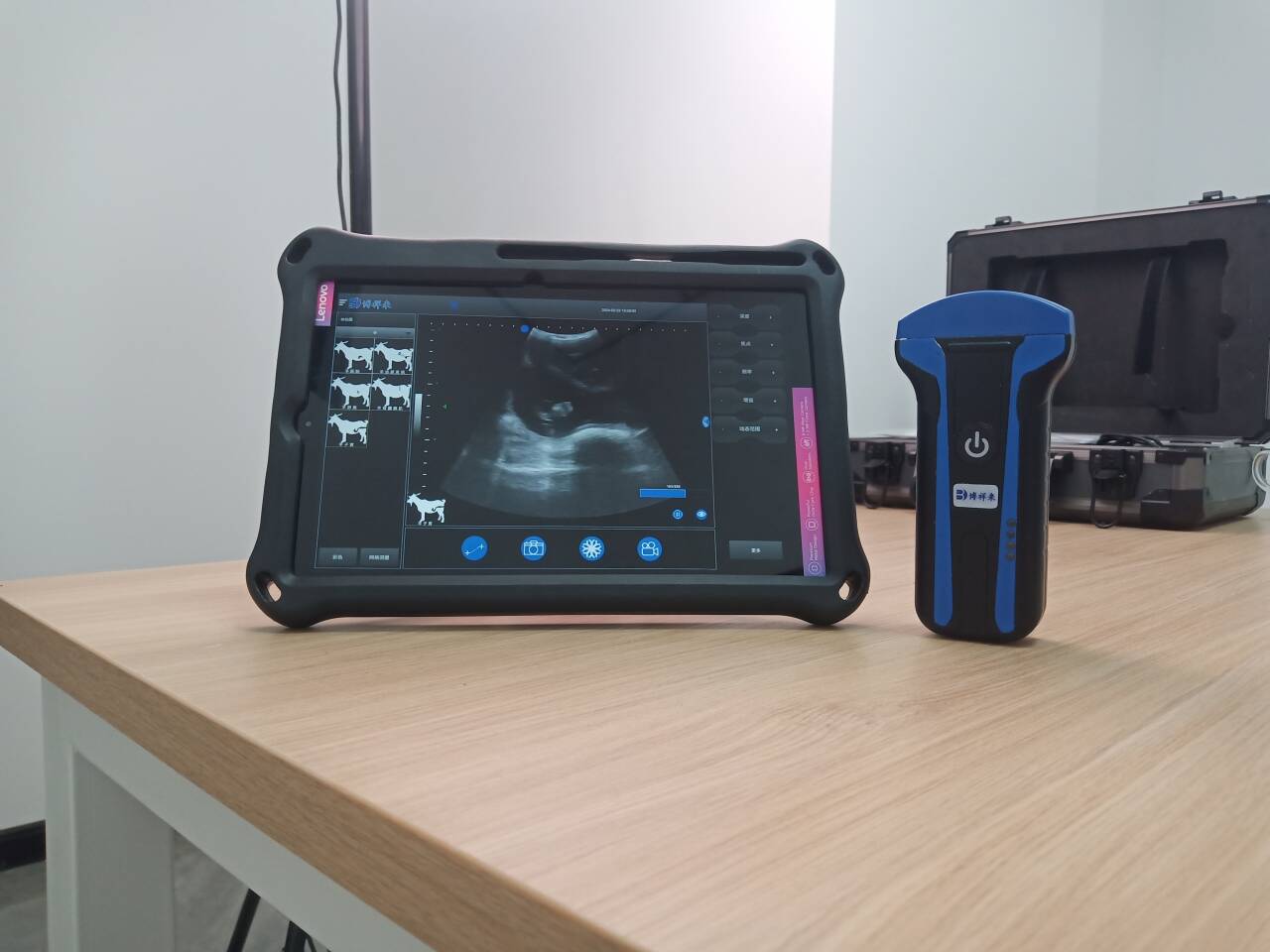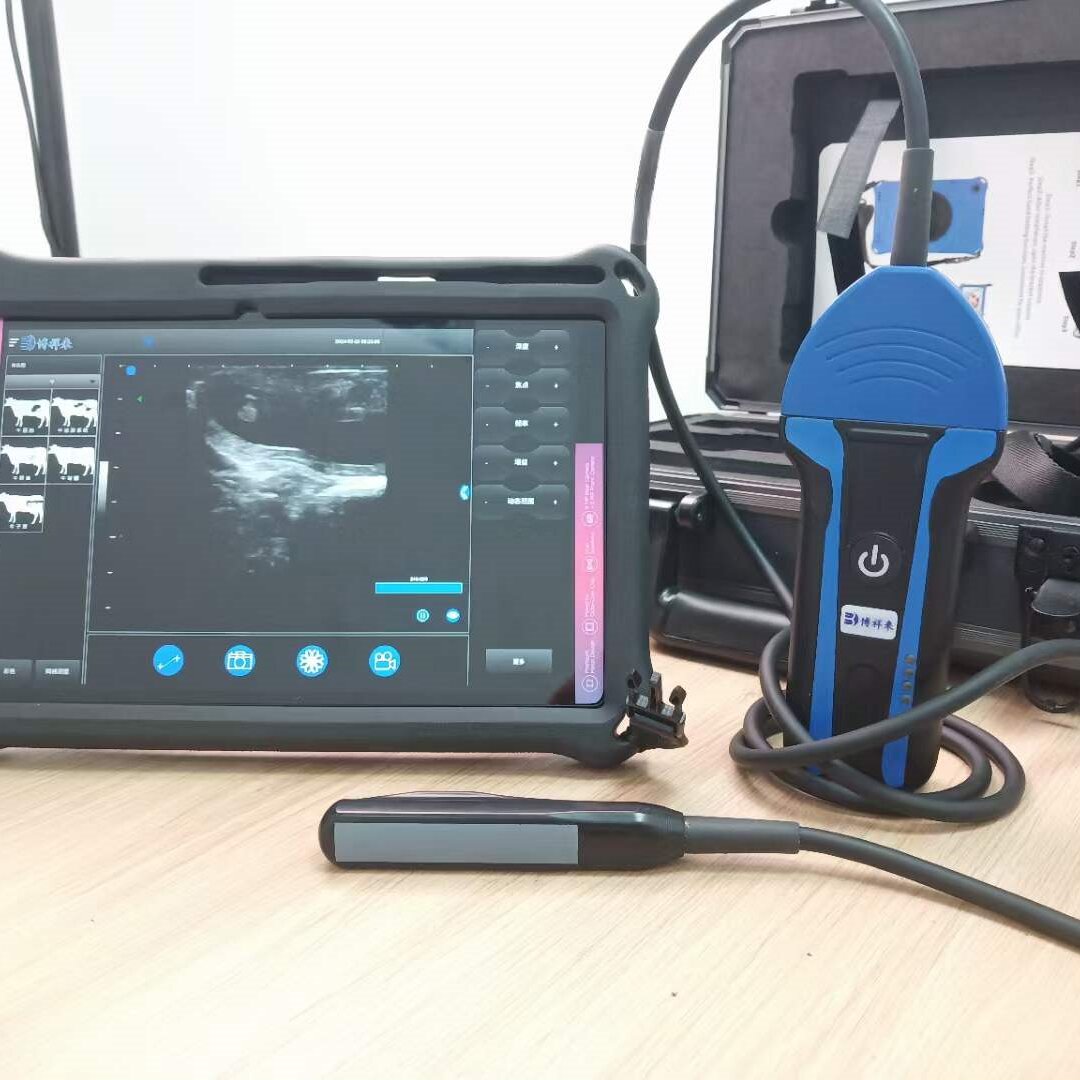Veterinary ultrasound technology has revolutionized the way veterinarians diagnose and monitor the health of animals. One of the most significant advancements in recent years is the rise of handheld veterinary ultrasound machines, which offer portability, convenience, and high-quality imaging at an affordable price. These compact devices are becoming an essential tool in both small and large animal practices. In this article, we’ll explore the benefits, applications, and top features of handheld ultrasound machines, and why they are quickly becoming a go-to solution for veterinarians.

What is a Handheld Veterinary Ultrasound?

A handheld veterinary ultrasound is a compact, portable device designed to provide real-time imaging for diagnosing various conditions in animals. Unlike traditional cart-based ultrasound systems, handheld units are small enough to be carried in one hand or stored in a bag, allowing veterinarians to take them directly to the patient, whether in the clinic, on the farm, or in remote locations.
These devices offer powerful imaging capabilities while maintaining a lightweight and easy-to-use design. They are ideal for veterinarians who need to perform quick, accurate diagnostics without the need for bulky equipment.
Benefits of Handheld Veterinary Ultrasound
The rise of handheld veterinary ultrasound machines has transformed the way veterinarians conduct diagnostic imaging, offering several key advantages:
1. Portability and Convenience
One of the most obvious benefits of handheld veterinary ultrasound devices is their portability. These machines are designed to be carried anywhere, making them perfect for mobile veterinarians, farm visits, and fieldwork. Whether you’re treating small animals in a clinic or examining large livestock in a barn, handheld ultrasound machines offer the flexibility to bring the technology directly to the animal.
2. Cost-Effective
Compared to traditional ultrasound systems, handheld models are more affordable, making them an attractive option for smaller practices, startups, or mobile veterinarians. Even with their lower price point, many handheld devices still offer high-quality imaging that meets the diagnostic needs of most veterinary applications. This makes them a cost-effective solution for veterinarians looking to expand their services without a huge investment.
3. Real-Time Imaging
Handheld veterinary ultrasound machines provide real-time imaging, allowing veterinarians to quickly and accurately assess an animal’s condition. This is especially important in emergencies, where rapid diagnostics can be life-saving. Whether you need to check for pregnancy, assess internal organs, or diagnose soft tissue injuries, handheld ultrasound delivers clear, immediate results.
4. User-Friendly Design
Modern handheld ultrasound devices are designed with ease of use in mind. Many come equipped with touchscreens, intuitive interfaces, and simplified controls, allowing veterinarians to perform scans with minimal training. This makes handheld devices especially useful in busy practices where quick, accurate diagnostics are essential.
5. Versatility
Despite their small size, handheld veterinary ultrasound machines are highly versatile. They can be used for a wide range of diagnostic applications, from pregnancy checks to abdominal imaging and musculoskeletal assessments. Some models even support multiple transducers, allowing veterinarians to switch between different scan modes depending on the species and the area being examined.
Common Applications of Handheld Veterinary Ultrasound
Handheld veterinary ultrasound devices are used across a wide variety of veterinary practices, including small animal, equine, and livestock care. Some of the most common applications include:
1. Pregnancy Diagnosis
Handheld ultrasound machines are widely used for pregnancy diagnosis in animals, from dogs and cats to horses and cattle. Veterinarians can use the device to confirm pregnancy, monitor fetal development, and check for any potential complications. The portability of handheld ultrasound makes it ideal for farm visits, allowing veterinarians to provide immediate care in the field.
2. Abdominal Scans
Abdominal ultrasound is essential for diagnosing conditions affecting the liver, kidneys, spleen, bladder, and gastrointestinal tract. Handheld ultrasound devices provide clear, real-time images of the abdominal organs, making them a valuable tool for diagnosing issues such as tumors, blockages, and internal injuries.
3. Cardiac Imaging
Handheld ultrasound machines with Doppler capabilities can assess heart health and blood flow in animals. Cardiac imaging is critical for diagnosing conditions like heart disease or monitoring post-surgical recovery. Handheld devices make it easy to perform on-site cardiac exams, particularly in animals that may not be able to travel to a clinic.
4. Musculoskeletal Imaging
Handheld veterinary ultrasound devices can be used to examine joints, tendons, and muscles in animals, particularly in horses and other performance animals. This makes them ideal for diagnosing lameness or soft tissue injuries, providing real-time feedback that can be used to determine treatment plans or monitor recovery progress.
5. Emergency Care
In emergency situations, quick and accurate diagnostics are critical. Handheld ultrasound devices allow veterinarians to assess trauma, internal bleeding, or organ damage on the spot. This portability is invaluable in emergency cases, especially in large animals or wildlife, where transporting the patient to a clinic may not be feasible.
Key Features to Look for in a Handheld Veterinary Ultrasound
When choosing a handheld veterinary ultrasound machine, it’s essential to consider the features that will best meet your practice's needs. Here are some key factors to keep in mind:
1. Image Quality
Despite their small size, many handheld ultrasound devices offer impressive image quality. Look for a machine with high-resolution imaging and good contrast, as these factors are critical for making accurate diagnoses. Some handheld models also offer advanced imaging modes, such as Doppler or 3D imaging, which can be beneficial for specific applications.
2. Battery Life
For veterinarians on the go, battery life is an important consideration. A handheld ultrasound machine with a long battery life allows for extended use in the field without the need for frequent recharging. Look for devices that offer several hours of continuous scanning on a single charge.
3. Transducer Options
Different diagnostic applications require different transducers, or probes. Some handheld ultrasound machines come with interchangeable transducers, allowing you to switch between probes depending on the type of exam you’re performing. For example, linear probes are ideal for musculoskeletal scans, while convex probes are better for abdominal imaging.
4. Ease of Use
A user-friendly design is crucial for handheld ultrasound devices, especially in fast-paced environments. Look for machines with intuitive controls, touchscreen interfaces, and minimal setup time. A device that is easy to learn and operate will save time and reduce the risk of diagnostic errors.
5. Connectivity
Many handheld ultrasound devices offer wireless connectivity, allowing you to save and share images easily. Some devices come with built-in cloud storage or USB ports for transferring data, making it easy to integrate with your clinic’s medical record system or share images with other professionals.
Conclusion
Handheld veterinary ultrasound machines offer a perfect combination of portability, affordability, and diagnostic power, making them an essential tool for today’s veterinarians. Whether you work in a busy clinic, provide mobile services, or treat livestock in the field, handheld veterinary ultrasound devices deliver the real-time imaging needed for accurate diagnoses and improved animal care. By investing in a reliable handheld ultrasound machine, veterinarians can expand their diagnostic capabilities and offer faster, more convenient care for their patients.
Explore the best handheld ultrasound options today and take your veterinary practice to the next level!
tags: Handheld Veterinary UltrasoundBxl Handheld Veterinary Ultrasound


